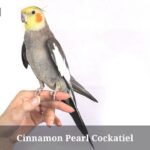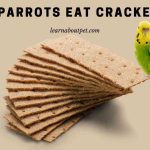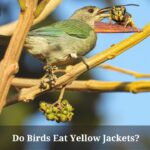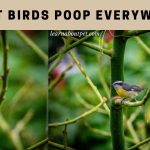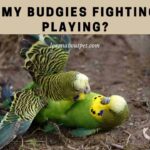Adaptation of parrots as pets is a very common feature in homes. There are many kinds of pet parrots from small to large and with different colors and hues. With their friendly and affectionate personalities, they make good house pets.
Pineapple Conure comes into existence by mutating Cinnamon Conure and Yellow sided Conure together. Pineapple Conure bird has rich colors inheriting the best from both species and is an attractive alternative to Green Cheek Conures for pet bird lovers. Also, being small in size makes it easier for pet owners to choose Pineapple Conure birds.
The Pineapple Conure bird, being a rarity due to color combination, is a parrot in high demand for adoption as a pet.
Here we discuss the pineapple conure bird, how big do conures get, pineapple conure price, and many more questions asked by pet enthusiasts concerning the conure bird.
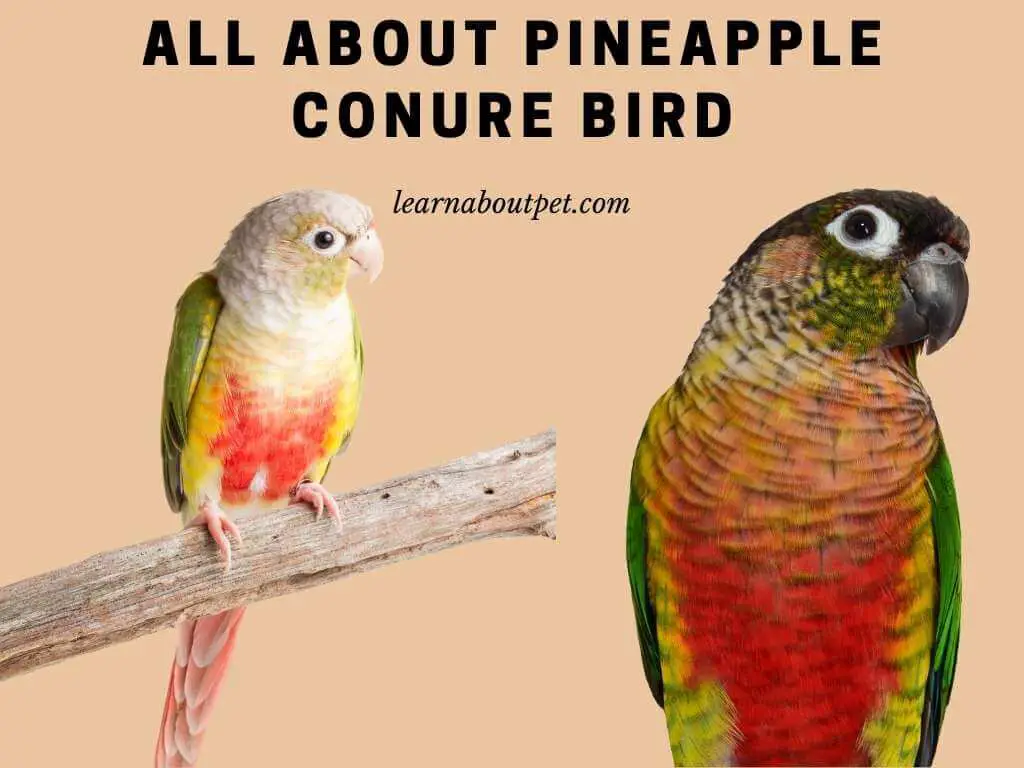
What Is A Pineapple Conure?
Pineapple Conure is a species of small and medium-sized parrot family originating from South America. Also categorized by the generic term parakeet by the scientists.
Pineapple Conure bird is the name derived from the color of feathers of the parrot. This color has been achieved by selectively breeding two different colored green cheek Conures.
The ‘pineapple’ color is achieved by cross-breeding cinnamon Conure and yellow-sided conures. Pineapple Conure bird is also referred to as green cheek Conure pineapple.
Due to the color hues and its rarity, the green cheek Conure pineapple is quite in demand as a pet. Take a look at Pineapple Conure Wikipedia if you are looking for more information.
What Are Pineapple Conures Like?
The green cheek conure pineapple is relatively a small parrot. A full-grown green cheek conure is about 10 inches in length and weighs 2 to 3 oz.
Personality-wise they have cool temperaments, full of fun, and compared to fellow species are relatively quiet. Because of these traits, it is more suitable for adaption in apartments.
Pineapple conure bird owners tell pineapple parrots are intelligent and learn many tricks. They can learn some speech. Can have a prereferral bond with one person, but there are incidences of being comfortable with all family members.
For these traits, the pineapple parrot is recommended for beginners who are just starting to adopt a conure parrot as a pet.
How Can You Tell If A Pineapple Conure Is Male Or Female?
Outwardly it is difficult to know the difference between the male and female pineapple conures. There is hardly any sexual dimorphism.
It’s not easy distinguishing a female from a male conure until you get to know them. Both are mostly green. However, most females will have yellower plumage than a male of the same age. He may also be larger at the same age. Be careful though; some males can look just like a female if they haven’t come into adult coloring yet! –
To tell your pineapple conure’s sex, try doing a “tail fanned” method. Gently lift the tail feathers up slightly and look at the exposed skin. Look for any small bumps that may be there, as well as overall coloration of the exposed skin. One small bump on one side will usually mean that your conure is female; two bumps along each side are going to indicate a male!
People generally just try to guess from the traits of green cheek conure male vs female like dominance, aggressiveness, and outward behavior. The female pineapple conure being more soft and loving etc., but this is very erroneous.
There could be experts in this field but their know-how does not come out 100% true all time. The best is to wait and see if the pineapple conure bird lays eggs. The other is by DNA analysis.
Do Pineapple Conures Make Good Pets?
Pineapple conure bird is a small-sized parrot with not many wants and is considered a low-maintenance pet. It can imitate some human speech, is quite sociable, playful, and intelligent.
It does not make many squawks and screeches as compared to other parrots species. It has vibrant color mixes of yellow, lime green, bright red, orange, and maroon. Their eyes are ruby red. A treat to look at.
They are quite interactive with their owners and family members. Like to be handled and caressed. Intelligent and loving and are great for companionship.
Because of these qualities, the pineapple conure bird is recommended for newbies who are interested to adopt a green cheek conure pineapple as a pet.
How Much Do Pineapple Conures Cost?
The general price range for the green cheek conure at the breeder shop is between US$300 to $500.
Special breeds like pineapple conure bird, yellow sided or turquoise can cost anything from $500 to $800.
Are Pineapple Conures Rare?
The pineapple conure bird is a mutation with special colors not found in other green cheek conures. Because of the special breeding between cinnamon conure and yellow-sided conures, their availability is rare.
Because of the rarity and beautiful colors, they command high prices.
Can Pineapple Conures Talk?
Generally, the conure breed of parrots is not considered talkers or imitators. Green cheek conure pineapple being intelligent and capable of learning many tricks imitate sounds they hear around the house.
With proper attention and time from their caregiver, these birds can be trained to mimic human speech rather quickly.
The Patagonian Conures, Blue Crowned Conures, and Red Masked Conures are considered the better of the talkers in the group.
Pineapple Conure Personality
The pineapple conure bird has a unique personality. Being very intelligent they demand attention from their owners. They are very playful and interactive and they want to be engaged so.
They would like to be held and petted by their owners to show affection to them. Pet owners tell that if proper attention is not given they sometimes get aggressive and have to be handled carefully.
The pineapple conure bird is very energetic. Throughout the day it keeps moving, climbing, and dancing in its cage and swing and likes to hang upside down easily.
The provision of toys is a good thought. For these qualities, they are considered excellent pets for companionship.
How To Tame Your Pineapple Conure?
As with all animals, taming and training of the pineapple conure bird is a very persistent and repetitive job, requiring a lot of patience and discipline from the caregiver.
Taming principle is simple. Use food or treat as a temptation to induce the activity and reward the pet with the treat if it accomplishes the act. Contraptions have to be set up to help with the execution.
The general steps followed for taming are as follows. The first few steps are for developing a bond between the owner and the bird.
- Feel at home: The bird feels at home in its surroundings, feeling safe and well adapted. Cage placement is important. The bird should not be stressed. Remove all factors contributing to the stress from surroundings.
- Passive bonding: The bird should feel your presence. Be around its cage for many hours in the day. You can just be reading books, watching TV, or doing other chores. Can talk or sing so the bird hears you.
- Active bonding: Next, give some treats or feed through its cage bars to make it comfortable. Watch out for its behavior. If the bird shies away from your hand, do not look directly into its eyes. The bird considers it a predator’s stare. Don’t rush things. Take at the bird’s pace. It should be comfortable all time.
- Next, when a bond is established in the cage, you can open the cage door and see if the bird accepts your extended hand or finger with the treat. Gradually let the bird come out of the cage.
- When the pineapple conure bird is no more afraid of you, it means a proper bond is established between you two and the bird is tamed.
Each stage of the taming could take weeks. It is patience and consistency which will bring results.
What Should I Feed My Pineapple Conure?
Pineapple conure bird likes a big range of foods including fresh vegetables, fruits, seeds, nuts and commercially available pellets and even insects, especially larvae.
Below listed items can be safely given to your pet.
- Broccoli
- Squash
- Carrots
- Beans (occasionally)
- Peas
- Corn
- Leafy Greens
- Spinach
- Apple
- Melons
- Berries
- Birdseeds (commercial)
- Nuts (treats only)
- Cuttlebones (source of Calcium plus to sharpen the beak)
Always assure to keep your bird hydrated. Its water bowl must always be kept full of clean water. Some bird owners make two bowls available to the pet.
An ideal diet comprises 70% pellet, 20% greens and fruits, and less than 10% treat items like nuts, etc.
Clean all rotten food from the cage immediately. Putrid fruit or veg can easily make your pet sick.
Pineapple conure bird owners also ask can conures eat pineapple or can parrots eat pineapple. Yes, pineapple can be easily given to the pineapple conure bird.
They like most fruits. Moderation should be the rule while feeding them. Nuts are high in oils. A small nut in a day is enough for your conure size.
Watch for the green cheek conure weight gain. It will give health problems very quickly to the tiny bird.
How Smart Are Pineapple Conures?
Looking at the green cheek conure size one can say it is quite a clever and intelligent bird. This is especially reflected in its curious nature, energetic activity all day long and eagerness to communicate when it sees its owner.
Once it has developed a bond with its owner, it is very nosey and will snuggle under the shirt or hair, play with toys, and show a lot of acrobatic and playful movement around things.
Pet owners tell their green cheek conure pineapple likes to lie on its back in their palms, just for showing its affection. It will explore the house and check everything.
They have to be on watch all time when it is out of its cage, just to be sure it does not harm itself by doing something which it is not supposed to do-just like a small child.
Generally, conures are not categorized as talking birds, however, they can learn to mimic a dozen or so words. Besides they can mimic other sounds they hear from around the environment.
They have been trained to do a variety of tricks like come fly to me, kissing, shaking, sticking out the tongue, turning around, and waving. One owner reports its bird opening its cage and some report potty training.
Because of their high intelligence, they can easily become bored and depressed if they don’t have any activity. So need a lot of toys and other gadgets in their cage to keep them busy.
Pineapple Conure Lifespan
To the query of how long do pineapple conures live the answer is the average life span of a pineapple conure bird is 10 to 30 years.
In captivity, it can be taken as an average of 15 to 20 years. Some pet owners have reported 30 years with proper food and care.
As to how long do green cheek conures live in the wild, it is generally less because of predators and illnesses.
Pineapple Conure Care
Besides the normal food and medical health care, the other most important is their intellectual and mental feed.
Being intelligent, the pineapple conure bird requires quality time from the owner and small toys and contraptions to drive away the boredom.
For its food give dark leafy greens, a variety of brightly colored vegetables and fruits, berries, watercress, beet greens, and collard greens, melons.
Birdseeds and a variety of nuts should be given as treats. Vets recommend a bird pellet diet with calcium supplements for proper nutrition.
Cuttlebones and other mineral blocks and pellets should also be provided to cater to the vitamin and mineral deficiencies.
Fresh clean water should always be available for drinking. The pineapple conure bird should be kept well-hydrated.
The bird also likes to bathe frequently. Make arrangements for a special bowl for bathing.
Pineapple Conure Size
People often ask how big do green cheek conures get. The green cheek conure pineapple is considered a small bird. When fully grown the adult conure can grow up to about 10 inches in length, including the tail.
A full grown green cheek conure weighs about 2 to 3 oz. (60 to 80 gm.)
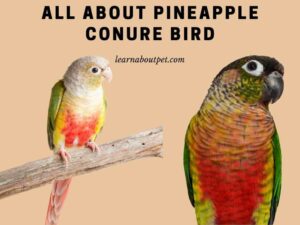
How To Train Pineapple Conure?
The training part can start after developing a good bond with the bird. Pineapple conure bird can be trained much easily at an early age.
As the bird matures, it has more reservations due to bad experiences and is reluctant to adapt or get used to new ways.
The driving element of the training is the lure of feed or treat. The pet is lured to get the feed and same time the command or action that is required is performed.
The voice should be very soft and repeated in the same tone and should be one word only. Not two words or more. The other element of the training is repetition with patience.
The aim is to make a habit of the pet by repeating the commands with the feed or treat, which results in the desired action. The treats should be given strategically so the bird associates them with the action demanded.
Gradually the treat is reduced and ultimately no more feed or treat is given and the pet performs the desired action on command.
So whenever it hears the command or sees action from the owner, it will repeat the act. This process can take weeks to get results.
Normally the ‘step up’ exercise is the first element of the training. The bird easily climbs up to the forwarded hand or finger of the caregiver to get food offered in the hand.
The bird should always be rewarded with small treats. Nuts are very much liked by the pineapple conure bird. Make sure it is not overfed with treats.
Pineapple Conure Colors
Besides the naturally occurring color forms, breeders have produced different color varieties by selectively breeding in captivity. A pineapple conure bird is a mutation of the green cheek conure.
A pineapple conure bird is an offspring of a cinnamon conure and a yellow-sided conure. The ‘pineapple’ is just a name given to make it look different.
Their head is tan-colored, sides are yellow, and back is lime green. The chest is a mixture of bright red and yellow feathers. Tails are light red to maroon colored. Their eyes are ruby red.
Red Factor Pineapple Conure
Red factor pineapple conure is with a variation in the color of the green cheeked conure. Simply there is more red color around eyes and chest.
A high red pineapple conure means there are more red-colored feathers. Also referred to as ’double red’ variety.
The high red pineapple green cheek conure is a mutation or morph of the green cheek conure, produced by mating conures having different colors.
Blue Pineapple Conure
This is another variation in the colors of the conure. Colors are made from the genes inherited from the mother and father. The common name is turquoise conure.
It is a misnomer as ‘turquoise’ is the term generally accepted and used for such colored conures.
Green Cheek Pineapple Conure
Also called pineapple conure bird, this is an offspring of a cinnamon conure and yellow-sided conure. Because of the color variations and largely yellow and red chests and sides, it is named pineapple conure.
Turquoise Pineapple Conure
This is another name given to green cheek conures having ‘blue’ colored feathers on the back. It is a rarity, maybe so named, just to make it different and fetch more price.
Pineapple Conure Vs Green Cheek
The green cheek conure is the parent breed group from the genus Pyrrhura molinae, which is a sub-family of Arinae. Some other names used are green-cheeked parakeet, yellow-sided conure, and green-cheeked parrot.
Pineapple conure is a name given to a morph or mutation of the green cheek conure, which has distinct yellow sides and lime green back. The chest is a mixture of yellow and red feathers.
A pineapple conure is a mutation of the cinnamon conure and a yellow-sided conure. The ‘pineapple’ is so named to make it look different.
Pineapple Conure Vs Sun Conure
The pineapple sun conure is from a different genus Aratinga, while the green cheeks belong to the genus Pyrrhura. Sun conure is somewhat larger than the pineapple conure.
They are very different in the colors of their feathers. The sun conure has mostly hues of golden-yellow, orange, and red plumage and orange-flushed underparts and face. The wings are green.
Personality and requirements wise they are almost the same. As a general rule, the pineapple conure is slightly more affectionate, calmer, and quieter than the sun conure.
Although these breeds can hybridize in captivity, it is suggested not to do this as they won’t do it in the wild or nature.
All these mutations bring out more vivid colors and personality traits. Such acts can spread new genetics carried diseases.
Cinnamon Conure Vs Pineapple Conure
Both cinnamon conure and pineapple conure are from the same genus family. One of the parents of the pineapple conure is cinnamon conure. The other is yellow-sided conure.
Appearance-wise they look quite similar to a common man. However, there are color variations. Cinnamon conure has less red and yellow colors.
The yellow in cinnamon will be dull compared to the pineapple and will have a lime green tinge. The cinnamon will not have the reddish-orange feathers in the lower back
Comparing cinnamon vs pineapple conure they have similar personalities and temperaments. However individual traits, likeness, and dissimilarity can vary from bird to bird.
Green Cheek Pineapple Conure For Sale
When responding to such an ad the buyer must give some thoughts if he can handle such a pet for two decades at least and not abandon it to shelter after taming and developing a bond with the bird.
It is suggested to spend some time at the pet shop or the breeder to familiarize oneself with the pet care requirements and judge by self if he can give those deliverables.
Don’t buy (you are paying a big amount of $500 or more) from an unknown source. Go for a reputed breeder or pet shop.
Familiarize yourself well with all the information on the green cheek conure pineapple.
Baby Pineapple Conure Care
Baby Pineapple Conure are better than Babies any day – I know what you’re thinking: “I don’t care, I just want a baby pineapple conure to love!” That’s great, and yes… your baby pineapple is going to do a lot of the work in this department for you. However, the more care and love you provide for your new baby pineapple conure, the more it will return back to you.
We tend to think of our parrots as just that: birds… but they are actually more like human children. Think about it. If you haven’t had much experience with babies before, (or any at all), how can you possibly know what to do with one? You’re going to have to learn as you go, and your baby is going to be just fine. Just think… they can’t talk yet, so how could they possibly tell you if you’ve done something wrong?
But there are a few things that are known for certain about babies, including pineapple conures. One of these things is that they love to be held! They definitely want you to hold them and snuggle with them, all day long if possible.
A baby pineapple conure makes a great new addition to your family for several reasons, especially when you’re looking at getting a pet on a tight budget. Not only are they inexpensive to buy, they are even more inexpensive to feed and care for… but the most important thing about a baby pineapple conure is that it will love you unconditionally.
They’re adorable, affectionate and kind; exactly what you need when your free time is limited with work or other obligations.
Pineapple Conure Toys
As a first time owner of a pineapple conure, I am considering the addition of various Pineapple-themed toys to his cage. Pineapple toys are marketed specifically to have a pineapple scent to make them more appealing to Pineapple conures.
I was wondering if anyone out there had used any of these pineapples products with their birds and would recommend one over another, or if anyone has raised concerns about the safety of using product designed for birds?
Obviously my first concern is whether or not they would be safe for his beak and toenails.
I am also concerned with the Pineapple scent being too strong for his sensitive nose, or if there is any chance that pineapple can attract unwanted guests such as mites? I have been told this before after reading on many sites about how pineapples are toxic to parrots.
These are the ones I have for my Pineapple Conure that are safe for them and they seem to have liked them heavily.
1. Spinning Wheels
2. Feather Toys (Chewable)
3. Paper Towel Rolls Toys
4. Noisy Toys
5. Windchimes
6. various clip-on toys
Final Verdict On Pineapple Conure Bird
The pineapple green cheeked parakeet is in high demand, because of the vivid color display, and other personality traits especially high intelligence and quality to develop bonds.

The bright colors have been achieved by mating a cinnamon conure and a yellow-sided conure. The offspring has these bright colors of orange, red, yellow, lime green, light red, and maroon.
The average pineapple green cheek conure lifespan in captivity is taken as 15 to 20 years, but pet owners tell with proper care they can achieve 30 years.
The green cheek conure pineapple is considered a low-maintenance pet. Because of its playfulness and energetic activities, it demands great attention from the caregiver.
If it is not given proper quality time the green cheek conure behavior can change to an aggressive nature, asking for attention.
It can be easily trained to do many small tricks and obey commands and has a small vocabulary of mimicking the human voice. It enjoys eating all types of greens and fruits and nuts.

Welcome to Learn About Pet. My name is Rajkumar Ravichandran and I love all pets, travel, and amazing food. I write about my passion and personal experience caring for multiple pets in this blog! ❤️
Post Disclaimer
DISCLAIMER: THIS BLOG OR WEBSITE, "Learn About Pet", DOES NOT PROVIDE YOU WITH MEDICAL ADVICE AND IS NOT A SUBSTITUTE FOR MEDICAL ADVICE. ALWAYS GET IN TOUCH WITH YOUR PERSONAL VETERINARIAN AND USE INFORMATION HERE AS GENERAL ADVICE.
The information, including but not limited to, text, graphics, images and other material contained on this website are for informational purposes only. No material on this site is intended to be a substitute for professional veterinary advice, food recommendation, diagnosis, or treatment. Always seek the advice of your veterinarian or other qualified health care provider with any questions you may have regarding a medical condition or for pet food related questions.
